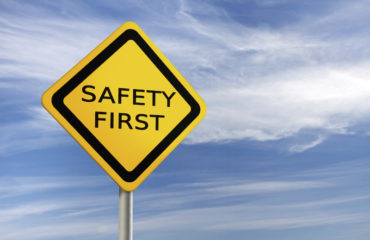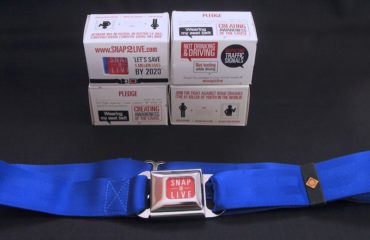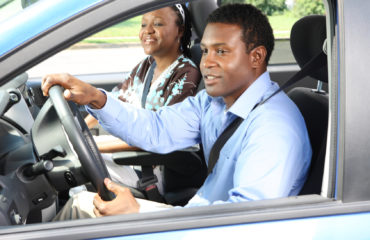When I was in 2nd or 3rd grade, my brother and I were in the back seat of the family car, almost home, and as brothers will do at times, we were tussling. It was rainy and my father was driving slowly on our home street when all of a sudden, my brother hit the handle of the door, the door popped open and he fell out of the car. He was wearing a yellow rain slicker. Years later my father chuckles about it, remembering the image of my brother in the rearview mirror, clad in his bright yellow raincoat, running after the car. We can laugh now, but at that moment, there was a lot of concern. (Yes, my brother was fine because of the slow speed and the raincoat that helped protect him when he fell out.)
However, this kind of result is rare. Several years ago a friend of mine was driving home from work and hit an embankment alongside of the road causing his truck to roll over. Because he wasn’t wearing his seatbelt, he was ejected from the truck. He died from that crash.
Last week, Gopinath Munde, India’s Union Rural Development Minister, died in a car crash. He wasn’t wearing a seatbelt while sitting in the backseat.[1] Another car hit the minister’s car throwing him forward into the headrest in front of him, resulting in a fatal spinal cord injury. It was reported that the damage to the minister’s car was minimal.
Safety Belts Saving Lives
Spanning almost 50 years of history, these three stories have a common point—a seat belt was not worn; not in the front seat and not in the back seat—and the last two incidents were deadly. With more than 50 years of research, we know that seat belts are the most effective safety feature ever invented for saving lives in a car crash, and yet they are still viewed by many as an unnecessary nuisance. This viewpoint is dangerously flawed; seat belts reduce the risk of a fatal injury by up to 50% for front seat occupants, and up to 75% for rear seat passengers. [2]
A majority of countries now have some type of a seat belt law, however, many countries do not require seat belts be worn by rear seat occupants. Some countries require all occupants to wear seat belts, but don’t enforce it. It’s basic physics: when a crash happens, if the person is not secured in the seat, he is thrown around in the car, and sometimes ejected, which can result in severe, even fatal injuries upon impact with the ground, or into the path of another moving vehicle on the road. “Being thrown clear” is a fallacy in almost every circumstance.
It is time for Action—Click It
In the United States the campaign “Click it or Ticket” is one of the most successful traffic safety messages. Combined with strong laws, effective law enforcement efforts and simultaneous messaging, 87% of the population now wear their seat belt when going anywhere in a motor vehicle.[3] That is a 25 percent increase since 1995. From 2008 – 2012 seat belts saved nearly 63,000 lives.[4]
Internationally, more countries are recognizing the need for strong laws, effective law enforcement and a consistent message of the need to wear seat belts. Afyonkarahisar Province in Turkey saw an increase in seat belt usage from 5% to approximately 50% in less than a year as the result of an intensive marketing campaign, high-visibility enforcement and wide support for the program from the academics and politicians.
In the call for action during the Decade of Action for Road Safety, increasing seat belt usage is one of the critical steps to saving lives. [5] Governments are called upon to implement strong laws, increase education on the need to wear seat belts, and encourage law enforcement officers to enforce those laws.
Buckle Up—Front and Back—You Can Do It
The beauty of this particular safety feature is that YOU have the ability to implement it. You don’t have to wait for a new law or a public education message. You can protect yourself from serious injury or death now, by reaching behind you and pulling the safety belt around you and clicking one end into the other. It doesn’t matter if you are sitting in the front seat, or the rear seat; in most countries, the odds are 99.9% that there are seat belts available for you to use.
Over the past 50 years there have been a number of advances in traffic safety; some small with minimal impact, others large with a significant number of lives saved. Yet, when you sit in the car, front or back, it is the belt across your lap that provides the best protection in a crash. Always take the two seconds to click the ends together; give yourself years more life.
What about you? Leave a comment below and let me know how have seat belts impacted your life?
NHTSA’s Click or Ticket Video
[1] India: Seat Belt could have prevented Gopinath Munde’s death says Harsh Vardhan, Gulfnews.com June 4, 2014. See also: A seat belt could have saved Gopinath Munde: Harsh Vardhan. The Hindustan Times, June 4, 2014.








